Living dead
"Word about Igor's regiment"
From time immemorial people are at war with each other. The result of this is often captive. Wounds, hunger, disease, slave labor - all these bondages are finally exhausting and ruining the prisoners, who with all their soul seek to find freedom. They hope that the houses are still waiting for them.
Woe to the conquered!
The ancient Egyptians called the captives alive dead, and this is all about their fate says. Behind the uniqueness of Egyptian architecture - countless slaves, on whose bones everything grew.
According to the Spanish Chronicle, when covering the main temple in the Aztec capital, 80 were sacrificed to thousands of prisoners killed in horrible ways.
The Europeans acted barbarously. In the XIII century in the era of Christianity, the ancestors of the "peaceful" Latvians showed brutal ferocity towards the prisoners - they were executed, for example, by quartering.
And how did they treat the captives in Russia? There are few testimonies, for the chroniclers described great events, not weekdays. In "Strategicon" 600 er Mauritius Stratega has evidence of the humane attitude of our ancestors towards disarmed enemies: “The Slavs do not keep their captives in slavery like other nations for an unlimited time, but, by limiting the time, they are offered a choice: do they want to return home or to remain there in the position of the free? ”Mercy for the vanquished was demanded by the“ Council Code ”of Moscow Russia (1649):“ The enemy who wants mercy is spared; unarmed do not kill; with women do not fight; youngsters do not touch. With prisoners to act humanely, ashamed of barbarism. Not less weapons hit the enemy with humanity. The warrior must defeat the might of the enemy, and not defeat the unarmed ”(Suvorov). And they did this for centuries. For example, after 45, 4 million Germans, Japanese, Hungarians, Austrians, Romanians, Italians, Finns turned out to be our captives ... What was the attitude towards them? They felt sorry for them. Of the captured Germans, two thirds of us survived; of ours in German camps, one third! “In captivity we were fed better than the Russians themselves ate. I left part of my heart in Russia, ”testify German veterans. "The daily ration of the ordinary: 600 of rye bread, 40 of meat, 120 of fish, 600 of potatoes and vegetables, and other products with a total energy value of 2533 kcal per day" ("Standards of boiler content for prisoners of war in NKVD camps"). For comparison: the total caloric content of the products of the Muscovite consumer basket in September 2005 g - 2382 kcal!
Captured relatives in Russia was taken to buy. For centuries, people lived under the threat of raids, the likelihood of captivity was part of life - and a kind of “state insurance” emerged. From the XVI century, the entire population paid the tax - “polonyanichnye money” (redemption treasury, enshrined in the “Council Code”). The tsar himself gave the money, the money spent was collected by the “whole world” by annual layouts among the population, and they replenished the treasury again. To give money for ransom from captivity was considered a godly deed. For the sake of their rescue, they went on military campaigns, although for some of the warriors this meant death in a new battle. Crosses were put to the dead in a foreign land, the survivors were awarded; those returning from captivity after the Russian-Japanese war marched along Nevsky Prospect, and the capital honored them as heroes.
It was Russia that proposed the elaboration of general rules of humane treatment of prisoners; In the 20th century, international laws appeared: the Hague Convention on the Laws and Customs of War (1907), the Geneva Conventions on the Treatment of Prisoners of War (1929 and 1949). True, it was all on paper, and in fact the atrocities continued. Everyone knows what the “cultural” Germans and Japanese did in World War II: experiments on people, the fat melted from them for making soap, millions of deaths in camps ... In our time, manners did not become better: cruelty to prisoners is still practiced very wide.
Hands up!
Haters of Russia gloat over the large number of our prisoners in World War II. According to various estimates, the number of Soviet soldiers in German captivity in 1941-1945. ranged from 4 559 000 to 5 735 000 people. The numbers are really huge, but there are a lot of objective reasons for such a massive capture of people.
1. Surprise attack
Whatever the guides of the idea “would have attacked Germany anyway, Hitler simply prevented Stalin,” but the Germans attacked, not the Russians, and this is a fact.
2. Number of attackers
June 22 went into battle 152 division, 1 Brigade and 2 motorized regiment Wehrmacht; Finland deployed 16 divisions and 3 brigades; Hungary - 4 Brigade; Romania - 13 divisions and 9 brigades; Italy - 3 divisions; Slovakia - 2 Division and 1 Brigade. Considering that the 2 brigades are approximately equal to the 1 divisions, we find that the 195 divisions went to the whole "crusade against Bolshevism" - 4,6 million people! And more and more new nations of the “united Europe” helped the victorious Wehrmacht.
3. Quality of attackers
The USSR was attacked by experienced professionals who had their hands on the war.
4. The unsuitability of many commanders
The defenders did not have experienced officers - a consequence of the pre-war purges in the army, washed away to the surface a lot of mediocrity and simply villains. They were possessed by fear; the enemy relied on their paralyzed will no less than on their combat power: on the eve of the war, the Wehrmacht General Staff reports on the state of the Red Army noted that its weakness lay in the commanders' fear of responsibility. In an atmosphere of suspicion, submissive obedience to orders from above was highly appreciated. And how many “wild” orders at the beginning of the war!
5. Lack of reliable rear
Even if the defenders, in spite of everything, held themselves to death, there were burning cities in the rear. Warriors were worried about the fate of their loved ones. Flows of refugees replenished the sea of captives.
6. Atmosphere of panic
The rapid advance of the enemy in their native land frightened people. Fear made it difficult to act effectively against the attackers.
7. Repression against surrendered
The Order of the USSR NKO No. 270 has made many people deprived of the opportunity to be full-fledged soldiers. If a man came from the side of the enemy, for example, fled from captivity, he was considered a traitor. The presumption of innocence did not act. And yet, many of the captured tried to escape: in groups, alone, from the camps, on the stage; cases of mass, although the chance to leave was very small.
The Western Front, the “Ardennes Breakthrough” - Wehrmacht counteroffensive against the Western allies from December 16 1944 to January 28 1945. Having wedged into the enemy front on 100 km, the Germans captured 30 thousands of Americans! With the scale of military operations in which they participated, it is a lot. The Anglo-Saxons did not hold the blow at all, quantitatively and qualitatively dominating the agonizing opponent, even when his days were numbered! If we compare the situation by the same factors that occurred during the attack on the Soviet Union, it turns out that the American and British soldiers were captured by the enemy no less than ours, if not more often.
 1. Suddenness
1. Suddenness“The 75 of thousands of American soldiers at the front,” writes Dick Toland in a book about operations in the Ardennes, “went to bed on the night of December 16, as usual. That evening, not one of the American commanders suggested a major German offensive. ”
2. Number of attackers
In the offensive, you need threefold superiority in everything! The Germans collected one and a half times fewer soldiers than the Anglo-Saxons - 25 divisions, including 7 tank (900 tanks) and 800 aircraft. The Wehrmacht divisions were much weaker than the Allied ones in terms of both the number of personnel and weapons; understaffing in them reached 40%. According to the allied headquarters, all German formations in their combat power corresponded to 39 Allied divisions, which by mid-December 1944 had 640 full-blooded divisions on a 63 km front (40 of them American), including 15 tank divisions (10 tanks) , 000 aircraft; there were 8 airborne divisions in reserve.
3. Quality of attackers
The position of the Germans was critical, they lost the war on all fronts; their allies have already surrendered or fled to the enemy, increasing the already powerful potential of the anti-Hitler coalition. Our army stood in the east of the Reich, preparing for the final assault. The Allies almost broke through to the Rhine, also preparing an offensive. The economic situation is nowhere worse: Anglo-American carpet bombing turned the country into ruins, destroyed industry, there were not enough people or raw materials. For the operation, the Germans gathered literally the last crumbs - hastily trained teenagers and men older than 40 years; fuel was on the 1 refueling, ammunition - 1 kit.
4. Competency of commanders
Maybe, although no one on the eve of the war officers allied massively shot, as it was in the USSR.
5. Rear defenders
The motherland and the families of the British on their islands were not in danger of anything, not to mention the Americans who came from a well-fed country, already waging world war on World War II.
6. Atmosphere of panic
Taken aback, the Anglo-Saxons did not offer decent resistance, began a disorderly retreat, and then - a stampede. The American journalist R. Ingersoll wrote in the book “Top Secret”: “The Germans broke through our defenses on the 50 front for miles and poured into the breakthrough like water into a blown-up dam. And the Americans fled headlong from them along all the roads to the west! ”
7. "Order number 270" they did not have
Warring soldiers were people of the “democratic world”, “free in their choice.”
Assessment of the historian Garth: "The Allies were on the verge of disaster." The Western Allies were rescued from defeat by two circumstances — flight weather and Soviet soldiers.
“Planes in clouds flew to the front. Even if the exhausted columns of the Germans continued to move, they would not be able to continue their advance from the moment we got the opportunity to strike them from the air. Our first clear day aviation made 1200 sorties. The next day, 2000 bombers bombed 31 enemy tactical targets, dropping 4,3 thousand tons of bombs. Airplanes roamed the air over the Ardennes, hunting for crowded columns of Germans who stood helplessly on the roads ”(Bradley Omar Nelson,“ Notes of a Soldier ”).
6 of January, Churchill - to Stalin: “Very heavy battles are going on in the west ... I will be grateful if you can tell me if we can count on a major Russian offensive on the Vistula front or somewhere else in January?” The army rose from the Baltic to the Carpathians, crushed the defense of the enemy and went forward. The Germans immediately removed the pressure in the west and began to transfer troops to the eastern front.
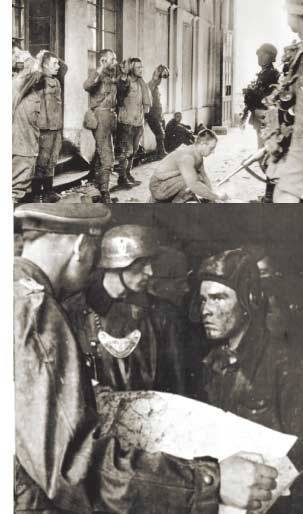 “Ardennes shame” was no exception. Korean war: 155 000 killed and 20 000 (!) American prisoners. Conditions of capturing so many healthy, well-fed, experienced (World War II has just ended) soldiers? The United States was at that moment a world gendarme with a nuclear cudgel and readiness to use it (Hiroshima! Nagasaki!), They were supported by the “world community” represented by the puppet UN troops - and yet 20 000 prisoners (including 7140 people who simply surrendered) that in comparison with the number of their troops on the Korean Peninsula is shamefully great!
“Ardennes shame” was no exception. Korean war: 155 000 killed and 20 000 (!) American prisoners. Conditions of capturing so many healthy, well-fed, experienced (World War II has just ended) soldiers? The United States was at that moment a world gendarme with a nuclear cudgel and readiness to use it (Hiroshima! Nagasaki!), They were supported by the “world community” represented by the puppet UN troops - and yet 20 000 prisoners (including 7140 people who simply surrendered) that in comparison with the number of their troops on the Korean Peninsula is shamefully great!"The cult of a prisoner of war"
It must be admitted that the United States reacted adequately to the mass surrender of its soldiers and the resulting loss of the image of the army. The “cult of the prisoner of war” was developed and skillfully introduced; as part of its American “GIs”, to this day, are served exclusively as heroes (compare with the actions of pro-Western media in Russia!), everyone who fell into the hands of the enemy is considered a fighting warrior. Examples? Swollen by the media completely lying "story Private Jessica Lynch ", where they insist that she fought back to the last bullet, and tortured her in captivity. The authors of the myth are not embarrassed by the absence of at least one witness to its capture by the Iraqis. The heroine was created, her memoirs and Hollywood "agitation" is already in the works.
The sophisticated, intensive development of the moral stability of the soldiers in battle, the horror of captivity shown by all media led to the fact that in Vietnam only the 589 "GI" surrendered - 12 times less than in Korea, although the war lasted three times longer, and went through it over 3 million soldiers. This is a success!
In 1985, the medal “For decent service in captivity” was instituted. She is awarded US soldiers who were in captivity, including in hindsight and posthumously.
And on April 9, the President of 2003 announced a new state holiday - "Day of Remembrance of American Prisoners of War": "They are national heroes, and their service in our country will not be forgotten." All this confirms in the soldiers the assurance that they will be taken care of if they are “not lucky” in the war: “Do not forget and blame their homeland”.
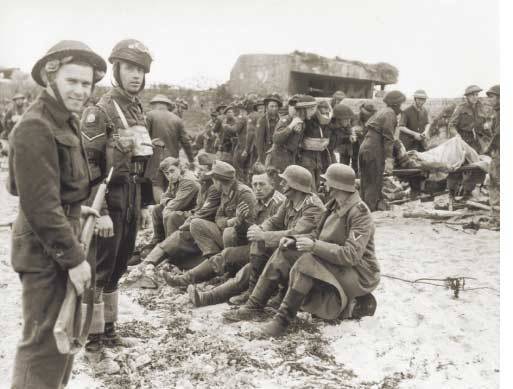
Strangers among their
But not everyone is so liberal. Thus, in Japan, suicide was preferred to captivity; otherwise, close relatives of the prisoner were persecuted by their own. In Germany and the USSR since the Second World War, relatives of the missing person (“What if he surrendered prisoner?”) Were denied support (they did not pay benefits, pensions).
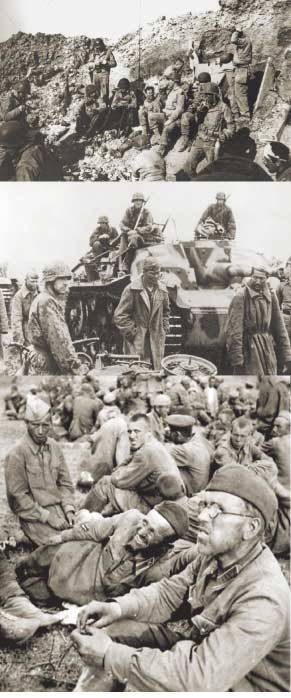 And remember, recently 8 Turkish soldiers were captured by the Kurds? Released two weeks later, they went to prison at home. Charge: “Why didn't you fight back to the last bullet?”
And remember, recently 8 Turkish soldiers were captured by the Kurds? Released two weeks later, they went to prison at home. Charge: “Why didn't you fight back to the last bullet?”Human rights activists complain that in the CIS attitude to the problem of captivity does not change. For example, Azerbaijani soldiers who were in captivity in Armenia are condemned for treason against their homeland under Art. 274 UK AR. This is a heavy charge, and they give you 12 to 15 years for it. A man who surrenders is perceived as an enemy; it is not only the position of the authorities, but also the attitude of society. Hostility, lack of sympathy and social support - all of these former prisoners face everyday.
Ready to die?
In captivity, you can "be" (wounded, unconscious, the absence of weapons and ammunition) or "surrender" - raise your hands, when you can still and have something to fight.
Why did the armed man who swore allegiance to the Motherland raise his hands? Perhaps this is the nature of man? After all, he obeys the instinct of self-preservation, holding on to the feeling of fear. In life there is a partial fear, the fear of something, and very rarely - absolute fear, the fear of inevitable death. It violates everything (even the blood circulation!), Disables thinking and the former perception of the world around. A person loses the ability to think critically, analyze a situation, control his behavior. Having suffered a shock of fear, you can break down as a person.
Fear is a massive disease. Today 9 million Germans suffer from panic attacks from time to time, and more than 1 million constantly (with 82 million population) - in peacetime! This is an echo of the Second World War in the psyche of those born later.
After 10 years after the Vietnam War, 1 million 750 thousand US troops (2 / 3 who fought) were officially recognized as in need of psychiatric treatment. This condition is transmitted to their children.
Each has its own resistance to fear: in danger, one will fall into a stupor (sharp mental oppression to complete numbness), the other will panic, and the third will find a way out in cold blood. In battle, under the fire of the enemy, everyone is afraid, but they act differently: some fight, and others take at least with their bare hands!
 Physical condition influences behavior in battle, sometimes a person “simply cannot!” A message from the Volkhov Front surrounded by the 2 Shock Army (spring 42): “The marshes melted, neither trenches, nor dugouts, we eat young leaves, birch bark , leather parts of ammunition, small animals ... 3 weeks received 50 g of rusks ... We ate the last horses ... The last 3 days weren't eaten at all ... People are extremely exhausted, there is group mortality due to hunger. " Recently, healthy young men are exhausted by hunger, cold, unhealed wounds, enemy fire without the opportunity to escape ...
Physical condition influences behavior in battle, sometimes a person “simply cannot!” A message from the Volkhov Front surrounded by the 2 Shock Army (spring 42): “The marshes melted, neither trenches, nor dugouts, we eat young leaves, birch bark , leather parts of ammunition, small animals ... 3 weeks received 50 g of rusks ... We ate the last horses ... The last 3 days weren't eaten at all ... People are extremely exhausted, there is group mortality due to hunger. " Recently, healthy young men are exhausted by hunger, cold, unhealed wounds, enemy fire without the opportunity to escape ...War - permanent hard labor. The soldiers dug up millions of tons of land, as a rule, with a small sapper shovel! Slightly shifted position - dig again; there was no question of a respite in combat conditions. Does any army know about sleep on the go? And here it was commonplace on the march.
In the US Army there is an outlandish type of casualties - “overwork in battle”; when it landed in Normandy (June 44), it accounted for 20% of all losses, and later - already 26%. In general, in the Second World War, the loss of the United States due to "overwork" amounted to 929 307 people!
People break long-term stress from the probability of being killed in areas of greatest risk (the front edge in defense, the first echelon in the offensive). Our soldier remained in battle formation until death or injury (there was also a change of units, but only because of large losses or considerations of tactics).
American pilots after 25 sorties drove home. The calculation is simple: the 5% of crews did not return from each raid on the Reich, that is, the pilot after the 20 departures was supposed to be in the "other world". But whoever was lucky, he “overfulfilled” the norm before 25 departures - and goodbye. The war is in full swing for many healthy American guys ending. And our pilots? The same long-range aircraft that made 300 sorties to the deep rear of the enemy?
It is often written how well the “rest from the war” was put on the Germans (holidays). But this is a half-truth. Holidays were, while the war for them was "in the hunt." And when they were "not to fat", then there was no leave. For us the whole war was “not fat.” The blow of the German military machine could withstand the only force in the world — our Army! And our exhausted, sleeping on the march, with the need for horses that had been eaten up by horses, “uncool” soldiers PERMISSED the perfectly equipped skillful enemy!
The behavior in battle is influenced by the attitude to death, and here people are very different. The surgeon who worked in Vietnam during the American aggression answered the question “What distinguishes the Vietnamese as warriors?”, Without hesitation, replied: “They are different than we are about death - they are not afraid of it”. Everyone has heard about the Japanese kamikazes, Muslim shahids. Yes, fanatics, but the main thing here is that people went to die consciously, preparing for it in advance, it is not suicide of losers.
Captivity captive strife
Earlier in the Russian language the word "captivity" meant submission. And therefore it is better to die than to submit! He obeyed, accepted his fate — then you are a prisoner; No - it means that you are a slave, an enemy-bound fighter, not captive, not subordinate!
Let us return to the "Order number 270": he determined the attitude of the state to those captured by his soldiers, and in violation of the age-old traditions. This became, perhaps, the main misfortune of our prisoners: “The motherland renounced and cursed!” They were very afraid to be captured, but, despite their courage and fortitude, at the beginning of the war, this happened to many.
The meaning of the word (“captivity” = “submission”) blocked the very fact of falling into the hands of the enemy: “Being in captivity means giving up”! A soldier who fell into captivity was not equaled with a humble coward.
“It all depends on how the person behaved when he fell into the hands of the enemy. Even the most hopeless position cannot deprive him of the ability to resist ”(Marshal Meretskov).
This is about our very captives, with which our eyes are pricked. How to behave if “Motherland has renounced and cursed”? Most tried to escape: in groups, separately, from the camps, on the stage; cases of mass, although the chance to leave was very small. Here are the data from German sources: "On 01.09.42 (for 14 months of the war): 41300 Russians fled from captivity." Further - more: “The escapes became rampant: every month, out of the total number of those who fled, they manage to detect and return to the places of work up to 40000 people” (Economy Minister Speer). Further - even more: “By 01.05.44, (there is still a year of war), 1 million prisoners of war were killed while trying to escape.” Our grandfathers and fathers! Which of the crafty moralist moralists can say this about their cowardly "warriors"?
Brave, cowards - everyone wants to survive, if there is even the slightest chance. And someone in captivity went into the service of the enemy, so that at the first opportunity he could go to his own. Often passed. But they knew what was waiting for them (“Order No. 270”), and therefore they also often left abroad: the 23 battalions surrendered 10 “Eastern” Wehrmacht battalions in Normandy!
People in the West think differently: “The most valuable thing in life is life itself, which is given only once. And you can go for anything, just to keep it. ” Such concepts as “die for one's homeland”, “sacrifice oneself”, “honor is more precious than life”, “cannot be betrayed” and other nonsense are no longer a measure of a soldier and a man.
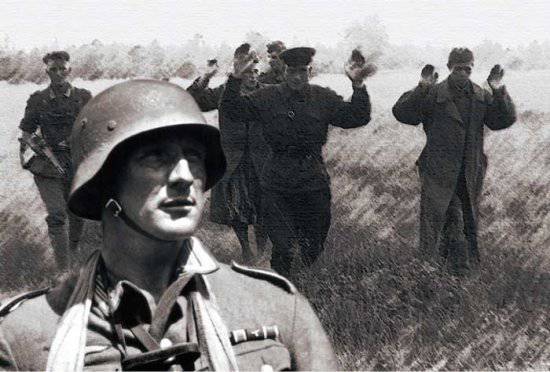
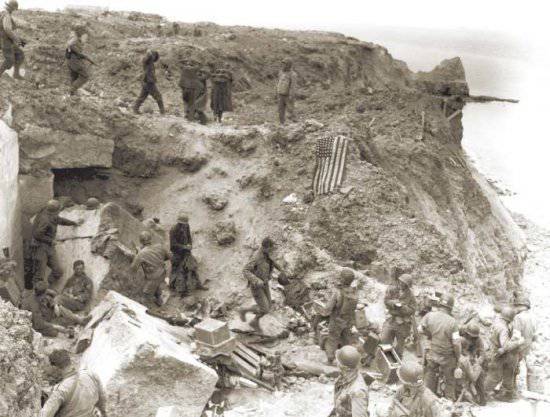
Information